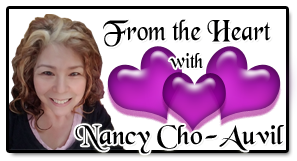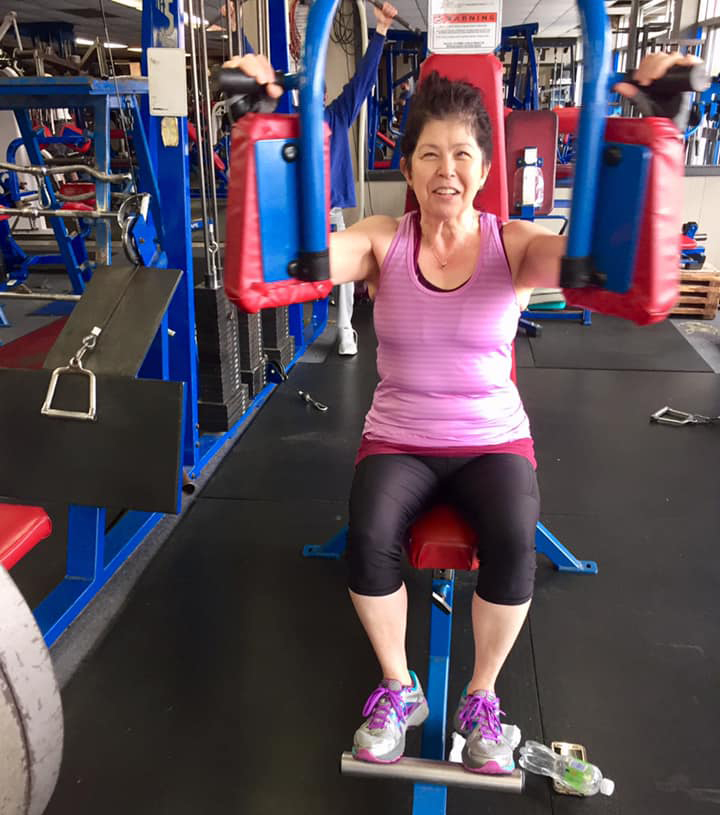I was a single mom, and my oldest daughter was a senior at Skyview High School. My youngest daughter was living with her dad in Lake Tahoe, California.
It was around February 28, 2004, my morning started out like most mornings, I got up early around 6:00 am, and woke up my daughter so she could get ready for school, and I would get ready for work.
At first, I was feeling fine, I had finished showering, and got dressed for work, and checked up on my daughter, who was not feeling well, she decided to take the day off from school, and to sleep.
At 7:00 am, I was beginning to feel a bit short of breath, almost as though I was having an asthma attack, so I used my inhaler, and proceeded on with my morning. About 10 minutes later, I was not feeling better and I went to my daughter’s room to have her call my supervisor at work, because I cannot hear on phones, to let her know I was not coming in to work that day. I decided to just lie in bed with her and wait the pain out.
Another few minutes had passed, and the chest pains were beginning to just come and go. It did not feel too bad, but the inhaler was not helping with the pain.
(Sidenote: It was later discovered that I never had asthma).
As the chest pains continued, I was experiencing pain in my back directly behind my heart, pain was radiating up into my neck and jaw, and down my arms. It kept moving around and varied in intensity. I was not feeling cold or clammy. I just hurt, and it felt like someone was squeezing my esophagus and my heart.
At this time, I felt it would be prudent to go to the hospital, so I asked my daughter to call an ambulance for me, at this point. She told me I was scaring her, but I told her I needed to go to the hospital. She immediately called 911 and an ambulance was dispatched. A few minutes later, there was a knock on the front door downstairs, and our little chihuahua alerted us with her barks, and my daughter then went downstairs and let a team of three or four paramedics/ambulance first responders upstairs. In the interim, I went back to my bedroom, and was lying down.
As they began their assessment, I told them my symptoms, and they were almost sure of three things:
- I was having an anxiety attack
- I was most likely having an episode of esophageal reflux.
or - I was having a heart attack
I adamantly told them NO… I had neither. First, I was speaking in full sentences, and therefore, was not out of breath… So no I was not having an asthma attack. Second: I was feeling pretty calm, (in spite of being in pain which ranged from a 3 to a 10 on the pain scale of 1 to 10) and that rules out anxiety. Third: I was not experiencing any heartburn or esophageal reflux at all.
From the time they arrived approximately at 7:15 am, it took them about 45 minutes to complete their assessment around 8:00 am. They decided, it would be best to take me to the emergency room at SW Washington Medical Center, formerly known as St Jospeh’s Hospital. I was then asked to walk downstairs where there was a gurney waiting for me at the bottom of the stairs by my entry way at the front door. My daughter opted to ride in the front seat with the ambulance driver.
From there, they got onto the freeway at a leisurely speed of 55 mph. There were no lights, no sirens, no sense of urgency what so ever.
By the time I had arrived to the hospital, it was approximately 8:30 am. I was taken to the emergency department, and was lying on a bed around 8:45 am. From that time forward, another assessment was taken, and again, I repeated all the symptoms that I was experiencing. Intermittent chest pains which would come and go, the pains would radiate from my chest, behind my heart into my back, up my neck and jaw, down my arms. The intensity of the pain ranged from 3, which is tolerable, to a 10, which is the equivalent to labor and delivery (but in my chest). Outwardly, my color was a picture of health, I displayed no pallor, clamminess. My skin was dry, and I did not exhibit any signs of pain or distress. Again, I remained calm during this entire duration of the assessment.
The ER providers started a series of tests: The first test was an EKG (Electrocardiogram). The results were 99% normal, it did show a very small abnormality, a blip, if you will, in the reading, but otherwise read as normal… the doctors felt this was an inconsequential EKG, and of no concern. The second test was a pelvic exam. Yes. You read that right. A pelvic exam was performed for reasons unknown to me. Trust me, I was doing fine down there. The pain was in my chest, located in a very different place than where I was being examined at the moment. Of course, the results were normal…nothing to see…moving on…
Keep in mind, the assessment and testing began around 8:45 am to 9:00 am. One hour and 45 minutes to two hours after I first exhibited symptoms.
I was still complaining of the same pains, and finally, a blood draw was ordered, because, all other possible causes were being ruled out. This blood draw was for cardiac troponins. This is the test that will reveal whether a coronary or cardiac event is taking place or has taken place. Meanwhile, the Chief of Cardiology met with me while the blood draw was being processed. I shared with him that my father had a heart attack in his mid 40s. We must have talked for at least 20 minutes to a half an hour. Then the results of the labs came in. My blood work revealed the cardiac troponins were elevated… indicating that a cardiac event was in progress.
The good doctor, Chief of Cardiology, wasted absolutely no time in getting me to the Cardiac Cath Unit. I was immediately prepped for an angiogram and or angioplasty. In the meantime, he had the cardiac surgeons on standby in case an emergency surgery was needed. As the angiogram was being performed, his nurse was by my side the entire time, and for the first time, since 7:00 am, I felt a bit scared, a little bit anxious, but relieved that I was going to have an answer soon. During the procedure, I was talking to his nurse, and being as still as I could all the while. Suddenly, she had a look of sheer horror and surprise on her face… I turned to see what she was looking at. The images on the monitor, revealed I had two blockages in the LAD, the Left Anterior Descending artery. I was having a heart attack which was occuring in an area that, I was told, is very hard to reach and to fix. Blockages that occur in this area are also known as the “Widow Maker.” For the first time in my life, I felt a sense of my own mortality and possibly impending doom, and yet… I remained calm. My life depended on it.
I received two medicated stents in the LAD, plus I was given drugs.. drugs to relieve my pain. I felt so much better, and asked if I could go to work. I was told very firmly, “No. We are going to admit you.” By this time, it was between 10:30 am to 11:00 am, if my memory is correct, almost 4 hours since I first experienced symptoms that morning.
Once I was settled into my room, my daughter and my best friend paid me a visit. It had been a long day already for my family, friends, loved ones, who were alerted to my condition. My daughter needed a break, and so did my best friend. As they went to the elevator to find the hospital cafeteria, they met up with the same first responders who had assisted me earlier that morning and taken me to the hospital. They asked my daughter how I was doing. She replied, “My mom is doing fine. She had a heart attack.” She said their faces turned white, and they did not say a word. She and my friend then went into the elevator, and we never saw them again, nor did I ever receive a bill for their transportation services after I had recovered.
I was admitted as inpatient for three days. I was taken off work for eight weeks, and it took at least eight or nine months to return back to baseline. All in all, I was extremely fortunate to have survived, and that only 15% of my heart was damaged. Two years following a lifestyle change and dietary modifications, my heart healed, the damage is no longer there, but I will need to remain on heart medications for the rest of my life.
I am sharing my story because women present to the ER, to routine medical appointments, etc with different symptoms than men do. Women’s symptoms are generally more varied, and sometimes more complex. Men present with textbook symptoms, i.e. a heaviness or pressure on their chest, as if an elephant were sitting on their chests, for example. I did not have anyone to advocate for me, but fortunately, I do have enough background and medical knowledge to know how to advocate for myself.
If you, or a loved one is having a medical emergency, follow your instincts. It is your body, you live in it. It is your loved one’s body, you know her well. She may need for you to advocate for her if in the event she is unable to do so for herself.
Start Learning More at:
- Heart disease in women: Understand symptoms and risk factors by Mayo Clinic Staff
- About Heart Disease in Women by American Heart Association Staff
- What You Need to Know About Heart Disease in Women by HealthLine Staff
Related Articles:
- Chronic Obstructive Pulmonary Disease (COPD)
- Fat Cells 300: Washing Fat Cells
- Learning About Vitamin D
- Movember! Men’s Health Month!
- How to Thrive with Chronic Pain
 Nancy Cho-Auvil is the author of From the Heart column for Wellness Works NW. Nancy is also a contributing author of Mixed Korean: Our Stories. Native to the Pacific Northwest, Nancy lives in Cowlitz County with her life partner and their cat, Keekers. Nancy enjoys working out with Karen G Clemenson. She also enjoys knitting. Check out Nancy’s personal blog at CrazyCozyChick.Blogspot.com. You can also find Nancy on Facebook. Nancy is a mom, a grandmother and a heart attack survivor so we know what she writes comes straight From the Heart…
Nancy Cho-Auvil is the author of From the Heart column for Wellness Works NW. Nancy is also a contributing author of Mixed Korean: Our Stories. Native to the Pacific Northwest, Nancy lives in Cowlitz County with her life partner and their cat, Keekers. Nancy enjoys working out with Karen G Clemenson. She also enjoys knitting. Check out Nancy’s personal blog at CrazyCozyChick.Blogspot.com. You can also find Nancy on Facebook. Nancy is a mom, a grandmother and a heart attack survivor so we know what she writes comes straight From the Heart…













